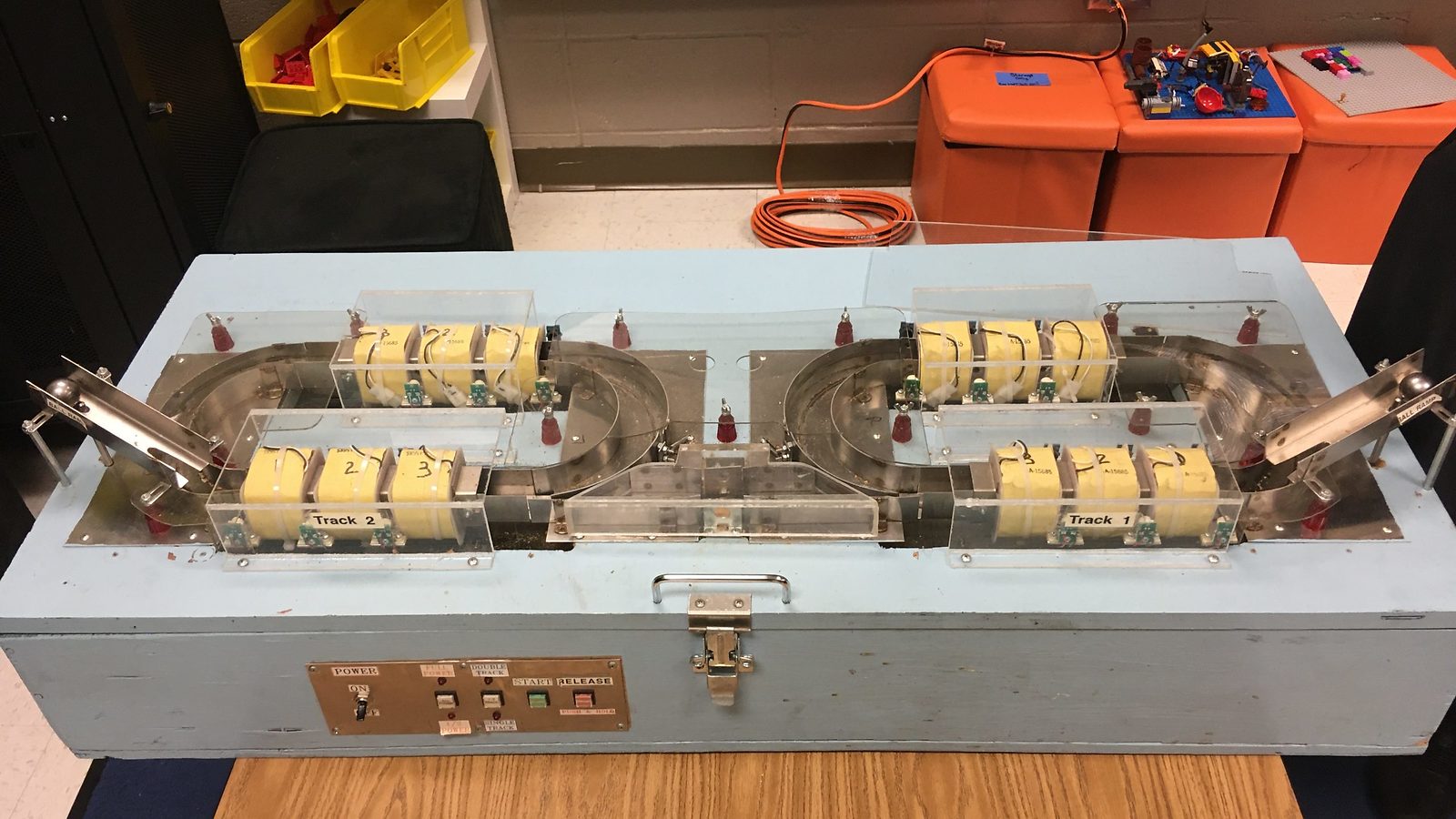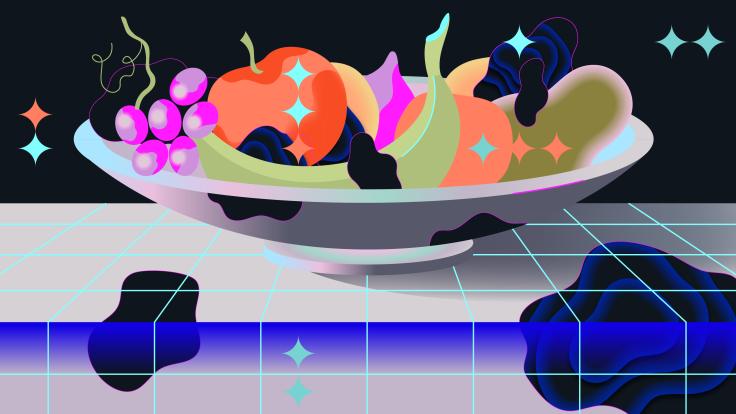On January 23, students at J.B. Nelson Elementary gathered in the school’s library for their first ever reverse science fair. Rather than being graded on their own projects and experiments, first- through fifth-grade students had the chance to judge Fermilab physicists on the quality and “coolness” of their displays and demonstrations.
“I was inspired to have a partnership with Fermilab when I visited with my son for a robotics competition,” says J.B. Nelson Principal Nicole Prentiss. While at the event, she ran into Peter Shanahan, co-spokesperson for Fermilab’s NOvA experiment and a senior scientist at Fermilab, who offered to give them a crash course in how neutrinos are detected.
“He proceeded to blow my mind,” says Prentiss, who immediately began looking for ways to bring the science being done at Fermilab to her school.
Prentiss mentioned her idea for a collaboration at a Parent Teacher Organization meeting, which Fermilab engineering physicist Aria Soha happened to attend. Soha offered to connect Prentiss to the head of the lab’s Office of Education and Public Outreach, Rebecca Thompson, who proposed the idea of a reverse science fair. After rounding up a few additional volunteer physicists, the group hammered out the details.
The result: three interactive science demonstrations arranged in corners around the library staffed by Fermilab scientists, all of whom had a child enrolled at the school (setting the stage for a grade-school-level conflict of interest when it came time for students to pick their favorites).
Throughout the day, students arrived in their respective classes. After receiving a few quick instructions on how to judge the projects, they split up into three groups to view the demonstrations.
Shanahan and Soha gave a presentation on the types of particles that make up matter, comparing them to LEGOs. They focused on particles called neutrinos and why their masses are so difficult to measure. Shanahan demonstrated how objects of differing masses are affected by traveling through different media. Simultaneously dropping different toys representing neutrinos onto the table, he asked which hit first, to a chorus of conflicting answers.
“What that means is, we really can’t tell by dropping them in the air,” Shanahan says. “There’s just not enough resistance.”
When he next dropped them into a clear container of water, the students could easily tell which of the toys had the greatest mass. Similarly, he explained, it’s a lot easier to tell which neutrino is heavier if you send them through the earth instead of through air. Soha then showed the group how neutrinos are detected by activating special fibers she had on hand with an ultraviolet light.
At a second showcase, physicist Brendan Casey had the difficult task of demonstrating the concept of muon precession. But Casey—who has four kids, two of whom are currently enrolled at J.B. Nelson—knew exactly how to grab their attention.
Two videos played simultaneously on a set of computer screens. One was a scene from the movie “Ant Man,” in which the main character shrinks to a size smaller than quarks. The other displayed a simulation, developed at the University of Adelaide, of the quantum behavior of quarks. Casey asked the group which was more likely an accurate depiction of reality. Everyone agreed that the simulation was the better choice, but Casey underscored the need for conducting experiments to support their assumptions.
Then it was on to the precession lesson. “Precession” refers to a type of rotational motion. To understand how muons—a kind of subatomic particle—precess in magnetic fields, the students used Beyblades (a brand of spinning top) in three shallow plastic tubs, two of which were filled with different materials that would affect the tops’ spins. Casey, who works on the Muon g-2 experiment at Fermilab, also stressed the importance of replication. Putting that principle into practice meant almost everyone got a turn playing with the tops.
The last project was run by Fermilab scientist Aron Soha (husband of Aria Soha, giving their child a particularly difficult choice to make that day), Fermilab engineering physicist John Kuharik and University of Illinois at Chicago scientist Marguerite Tonjes. To teach students how physicists make inferences about the internal structure of particles, they brought along a table-sized particle accelerator that smashed two pinballs into a target (in this case, fortune cookies).
After describing how accelerators work and what they’re used for, Kuharik fired up the machine and obliterated a fortune cookie, using the aphorism inside as a handy learning tool. (With a bit of subterfuge, Kuharik read from a fortune retrieved earlier that day rather than the one from the cookie they’d just smashed.)
“’You have the ability to sense and to know higher truth,’” Kuharik read. “It’s a perfect fortune for us, because that’s exactly what we’re trying to do. We’re trying to find the truth of how the world is made up, to get the best understanding of what the universe really is.”
Before the group left, Tonjes took a moment to encourage any students who might have an interest in science.
“I see people from Fermilab that look like everyone here, and there are people from all over the world,” Tonjes says. “You can be a physicist too.”
Then, as in a regular science fair, came the judging. Having seen the three experiment presentations, the students cast votes for their favorite. Students also filled out surveys both before and after the fair to gauge how much they’d learned about physics from each experiment. The physicist team who did the best at explaining their science would be given awards.
The following afternoon, a delegation elected from the student body traveled to Fermilab to present the awards. The kids’ choice award went to Casey of Beyblade notoriety. The award for best science communication went to Kuharik, Aron Soha and Tonjes.
“We’re hoping that this is just the beginning of a partnership,” Thompson says. “And we’re hoping that we can continue this relationship with J.B. Nelson and potentially do this same sort of program somewhere else.”
Editor's note: A version of this article was originally published by Fermilab.







